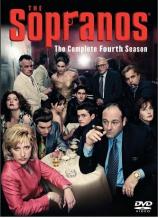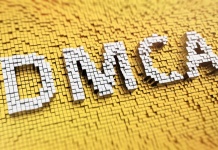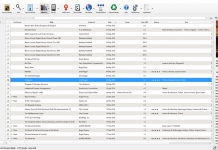 Tony Soprano would love the DRM blood oath for OverDrive retailers selling e-books in the Microsoft Reader format.
Tony Soprano would love the DRM blood oath for OverDrive retailers selling e-books in the Microsoft Reader format.
Prospective retail partners of OverDrive’s Content Reserve distribution arm must sign a Non-Disclosure Agreement before they can even find out information such as the percentage of revenue they must cough up for Microsoft DRM.
So what is it? Three percent? Five percent? Seven percent? Whatever it is, the dons of Redmond are secretive about the size of the tribute they demand. Keep in mind, too, that the OverDrive NDA apparently covers other fees and restrictions. But almost surely it is influenced by OverDrive’s DRM vendors to one extent or another. DRMed Adobe format may also be costly via OverDrive–perhaps thousands in recurring charges before a new retailer can sell just one book.
Needed: Openness about the retailers’ costs
In the past, many people just wouldn’t have cared about the NDA slapped on retailers. But that needs to change. OverDrive now wants one-book publishers to pay annual storage fees as high as $300 per year–and the largest companies to cough up thousands in new storage charges. Since OverDrive is asking publishers of all sizes to pay their share of the operating expenses, shouldn’t those houses get to know the details of the retailers’ side of the transaction? A little openness, please.
OverDrive President-CEO Steve Potash claims that publishers aren’t bearing their share of the burden, and it would help if he revealed more about retailers’ costs to make his point. Content Reserve’s Pamela Turner wouldn’t disclose the DRM fees when I asked some months ago. Are the percentage-based DRM charges really so onerous that they must stay a secret, and how about the up-front costs, which may run uncomfortably into the thousands, a big burden on mom-and-pop-sized operations? Some aggressive questioning by small publishers, of OverDrive, Microsoft and Adobe, could go a long way if the publishers truly want to look ahead.
Nice work if you can get it
Let’s say that global e-book sales eventually and miraculously grow from a pathetic $20 million a year to a whopping $20 billion despite all the DRM and Tower of eBabel hassles. Say Microsoft has finally gotten serious about the medium again and improved Reader and blown away the competition, so that, just as with the Word word-processor, its e-book format reigns. Well, then, a hypothetical five percent of a hypothetical $20 billion would leave the Richmond dons with a cool billion per year. Ka-ching, ka-ching! Not bad work if you can get it. But please, let’s hear more about the details, especially since so many of the small publishers say they don’t even want DRM capabilities in the first place.
Remember, too, that DRM percentages are just the tip of the iceberg of the cost of the technology. Imagine all the lost sales from customers frustrated by the inconveniences of DRM. Or the tech support demanded by braver end-users willing to jump through Redmond’s hoops? Or the higher spending on DRM-capable systems that OverDrive-style distributors need to include this oft-hated “feature”?
Public libraries and the DRM dons
Beyond that, bear in mind that while OverDrive doesn’t offer Microsoft-formatted books for public libraries, at least not the Cleveland system, the dons of Redmond surely want to be a major part of the library scene via other routes. Taxpayers should be entitled to know how much of their money is going for DRM. Just how big of a DRM tax will Microsoft and perhaps Adobe, directly or indirectly, seek to impose on cash-strapped local libraries and schools?
Also, are there anti-trust ramifications for Microsoft or OverDrive if the fee on retailers’ gross is five percent or some other outrageous level when e-book retailers don’t have the highest of margins? What does it say when Microsoft can enjoy such pricing power even when Microsoft Reader is so out of date?
To Adobe’s credit, as far as I know, it does not go by percent of revenue these days.
Instead it licenses out its tools and charges sites fees, which, though some might dispute them, at least aren’t geared to a percentage of revenues.
A burden just the same
Still, if you deal with OverDrive, Adobe’s own fees can add up. Tiny retailers apparently must pay thousands before they can sell one Adobe-DRMd e-book, and that’s onerous for small operations, especially since the charges may repeat after time.
Together, the retailers in the OverDrive operation may be paying hundreds of thousands of dollars for DRMed Adobe and Microsoft formats.
Is it really fair to pass even part of those expenses on to publishers that hate DRM?
The TeleRead take: While we’re not the biggest fans of DRM, we realize it can have its place–for example, as part of a system to help track use of file-shared books and fairly compensate writers and publishers. And some publishers will always insist on DRM. The solution might be a compromise, DRM Lite as I’ll call it–just a strong enough dose to keep honest users honest. Helpful, too, would be a business model such as TeleRead, which, by making many thousands of books free on the Net, especially popular ones of the kind most likely to be pirated, would reduce the incentives for rip-offs. Publishers and writers would be paid via a national digital library fund, with participation, too, by private philanthropies and the commercial side to assure maximum freedom of expression. In addition, local libraries could acquire books not included in the national system.

































